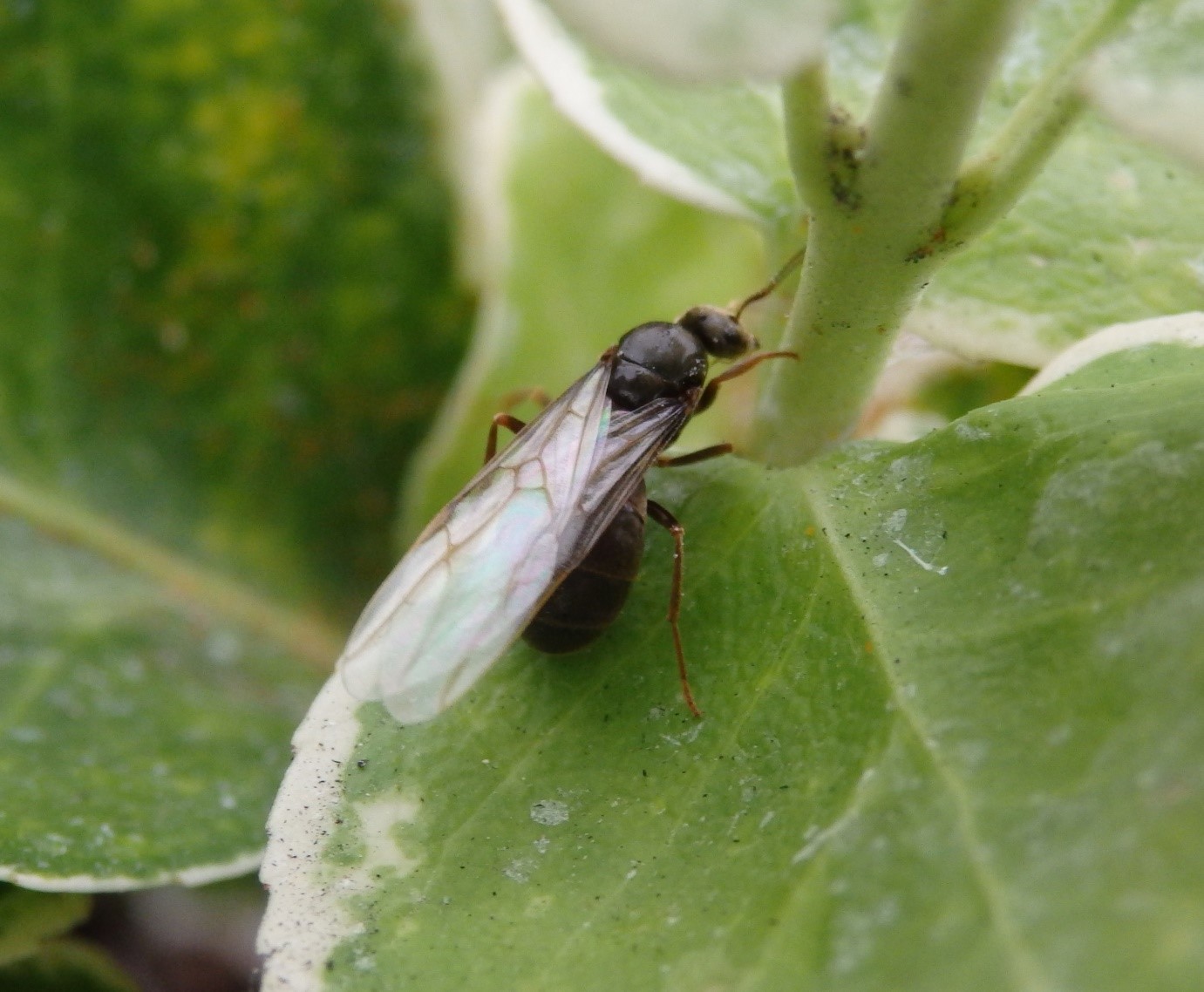

Flying Ant Day
Did you know that rainfall radar can be hoodwinked by swarms of flying ants? Over several days each summer, we witness “Flying Ant Day” when ants take to the air to mate and disperse.
Usually, signals from creatures like insects are filtered out by the Met Office’s network of weather radars. But on Flying Ant Day, the swarms are so large they can dominate the signal, as can be seen in this tweet from the Met Office.
Our radar is picking up more than just #rain this morning – it's actually insects!
— Met Office (@metoffice) July 9, 2021
Whilst there are a few rain showers, many of the echoes are in fact insects 🐜#FlyingAnts #FlyingAntDay pic.twitter.com/ZWEyaxTnkD
Luckily the confusion doesn’t last for long, as the reflectivity of an ant is rather different to that of a raindrop, leading to a tell-tale “clutter” pattern on the radar. And after a quick check with satellite imagery, rain gauges and social media, the tiny culprits are soon revealed.
Ants, like the black garden ant (Lasius niger), generally live underground, but male drones and young female queens emerge every year to fly en masse and breed with different colonies. After mating the queens will land, unhook their wings and find a suitable nesting site for their new colony. The queen will stay underground and not emerge for the rest of her life which could be up to 25 years!

Credit: Dr Elizabeth Duncan
Save the date
When exactly is Flying Ant Day? As you might expect, weather conditions play a big role in this. The ants usually fly when the weather is dry, warm, not too windy, and often after a little rain; the latter may help soften up the soil for the creation of new nests. Therefore, the date is not fixed and varies depending on locale with flying ant season running from June to September.
Typically, we see flying ant swarms start to take flight in the south and southeast of the UK first, and then later the north will follow. Urban areas may experience swarms before rural areas due to the urban heat island effect. The specific conditions that inform when the ants decide to swarm, while researched, do not pinpoint the time when they will fly.
Now a team of biologists and radar scientists at the University of Leeds plan to take advantage of this quirk of the UK’s radar network and use it to keep an eye on our insect friends, who are crucial to the health of our ecosystems. They hope to investigate the weather conditions present on Flying Ant Day; and compare these with days without swarms within the same season.
The BioDAR Project is a NERC funded research grant, aiming to test if we can use weather radar to monitor aerial insect biomass, and whether we can determine the diversity of insects being observed. Insects are fundamental to the Earth’s ecosystems, for example, they pollinate over 85 per cent of flowering plant species (that’s over 300,000 species!).
But insects are also facing population declines worldwide. Being able to effectively and reliably monitor insect communities is crucial for their conservation. Current methods used to monitor insect populations are limited, only targeting certain insect groups and gathering data at local scales. Utilising the UK’s weather network, which scans roughly every 9 minutes, would provide excellent spatial and temporal resolutions.
Send in your swarm sightings
The BioDAR project is designed to use a mixture of machine learning, in-situ observations and modelling to determine the extent of the ecological information that can be extracted from weather radar data. Like many of us, the pandemic disrupted our lives and workflow; it put our fieldwork and the in-situ data collecting on hold and we had to think of different ways to help validate some of our research questions, thus we turned to insect mass swarming events and citizen science.
To monitor flying ant swarms across the country, we are running a citizen science project. We have created a quick and easy web survey where anyone can record when and where they see flying ants across summer 2021. We are then going to use these data to help validate our weather radar observations. We hope to see correlations between citizen science records of flying ants swarming at ground level and large increases in reflectivity on the weather radar. We will also investigate how weather conditions at different altitudes affect swarming activity, and how localised these swarms are across different types of landscapes.

We would really appreciate your help in tracking flying ant day across the UK. To take part in our project and fill out our survey, please click here or scan the QR code on this page. You can watch out for updates on our website.
About the Authors:
Freya Addison (School of Earth and Environment, University of Leeds, & National Centre for Atmospheric Science): Freya is a NERC (National Environment Research Council) DTP (Doctoral Training Program) final year PhD student. Freya uses geodesy, the shape of the Earth to improve observations made between weather radar and airborne platforms such as weather balloons. The BioDAR project got Freya involved in applying her work to insects rather than clouds.
Tom Dally (School of Biology, University of Leeds): Tom completed his PhD in 2020, focusing on the development and standardisation of survey methods to monitor insect pollinator populations. Tom is now working as a research fellow on the BioDAR project, exploring how we can use the UK’s weather radar system to monitor aerial insect biodiversity at a national scale.
Dr Elizabeth Duncan (Associate Professor of Zoology, School of Biology, University of Leeds): Liz completed her PhD at the University of Otago in sheep genetics before moving to the lab of Professor Peter Dearden and totally changing fields to work on insect evolution, developmental biology and genome evolution. Liz is fascinated by how some animals have the ability to change their physiology, reproduction and behaviour in response to an environmental cue; a phenomenon known as phenotypic plasticity.




